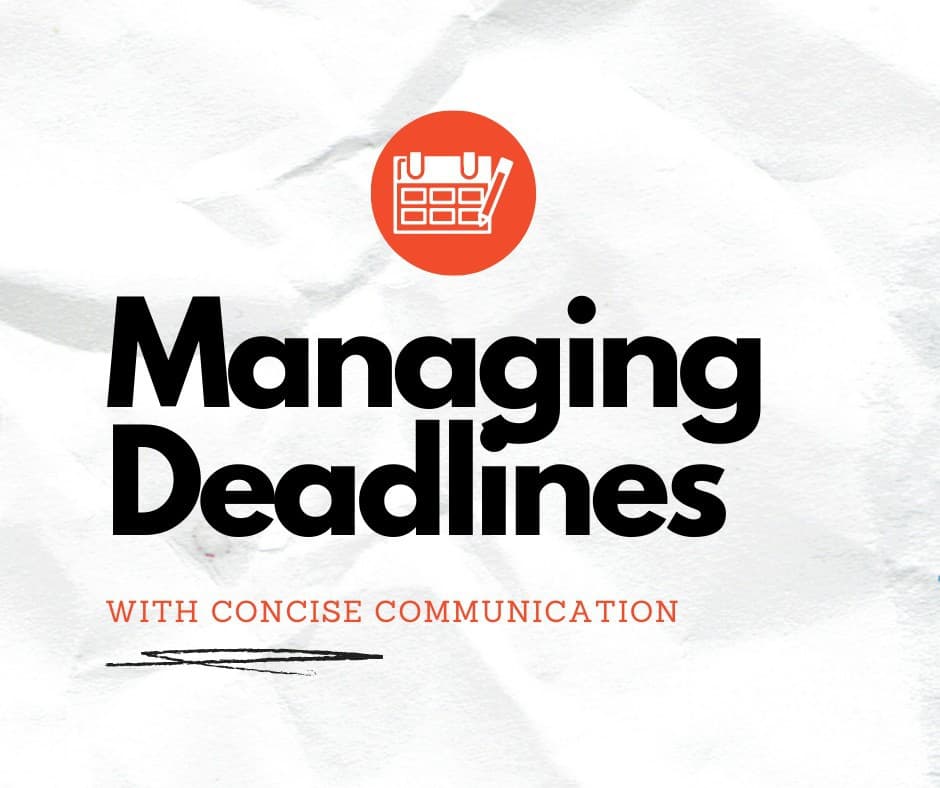
“Deadline” is a word that invokes so many negative feelings and painful memories for both business owners and employees: anxiety, stress, late nights, writer’s block, creativity taking a nosedive, and too much caffeine. Think about it, have you really ever had zero stress when managing deadlines? There’s a reason why the word comes to us from all the way back to the Civil War, where POW camps had “dead-lines,” which, if crossed by prisoners, would result in them being shot!
Deadlines were serious business back then and still are today. While perhaps not as deadly now, they still are a crucial part of effectively (and profitably) managing your client’s work. If you cannot effectively manage deadlines, you will lose money and your client’s trust. This article will focus on how to use concise communication with consequences to deliver on time to your client.
Why Deadlines Get Missed
There are common reasons why your team misses deadlines:
- Tasks weren’t assigned, and the team wasn’t clear on who was doing what
- Lack of understanding of the deadline value to the client (not understanding the bigger picture)
- History of no consequences interally when deadlines are missed
- Client changes scope
- The agreed upon deadline wasn’t actually realistic in the first place
All of these reasons come down to not effectively communicating. Consider this common scenario: when managing deadlines, often project managers will discover a deadline is missed because someone else on the team, or the business owner themself, couldn’t say “no” when a client asked for additional items without their knowledge. That’s the opposite of communicating with consequences.
How can you avoid this altruistic problem? It rarely results in goodwill from your clients, as they tend to forget that particular goodwill when deadlines are missed. Rather, the client is frustrated, if not outright angry, while you try to explain that the end date will not be met. Regardless of your explanations for doing what he asked, he voices a reasonable concern that boils down to this: He didn’t understand that what he asked for would take longer or cost more.
Change Management
So, how do you protect you and your team from being stuck between a rock and hard place when it comes to deadlines, while still protecting the client’s best interests?
- First, remind the main client contact – and your internal team members – that the project manager needs to be looped into any new requests or changes.
- Second, reinforce that part of a project manager’s job is to say no. Others doing the actual work shouldn’t have to carry that burden.
- Third, find out what the new request entails and how it will affect the outcome, price, timing, and quality.
- Finally, share the results of the request with the client – including how it affects deadlines and price – before the work begins to let him make the best decision.
Always get a client’s buy-in before you do anything outside of what was already scoped. The scope is determined by the creative brief or the proposal for the project. The scope and/or brief was created for a reason. You should not veer off from it without serious consideration. In fact, you should reinforce that requests that are outside of the brief or scope could affect the original value that was determined while crafting that document.
If a client knows in advance what his request will require and what it might affect, he can make a reasonable decision before any work being done. Framing the conversation is the important part.
Managing Deadlines
Of course, small tweaks and corrections should be included as part of any project. Time for them should be included while still meeting deadlines. Understanding the difference between a tweak and a scope change requires using good judgment and comes with experience.
Many people get stressed over changes. Change should not be emotional or worrisome. As a professional, you are paid to provide good advice to your client as well as to execute the work. In fact, the advice is of a much higher value to the client than the work itself.
There are several ways to handle managing deadlines and last-minute project tweaks. Effectively communicating this to your client is a crucial part of client relationships. Read more here about how to set realistic expectations with your client on what you can deliver, and how to say no.
It is your obligation to deliver the project’s promised value to your client by the deadlines agreed upon. That means you have to actually deliver. And, sometimes that requires saying “no” or at least “later” to new requests.
If your team needs help on getting your projects set up for success (including how to manage timelines), reach out to Beyond the Chaos for a free consultation.

Leave a Reply